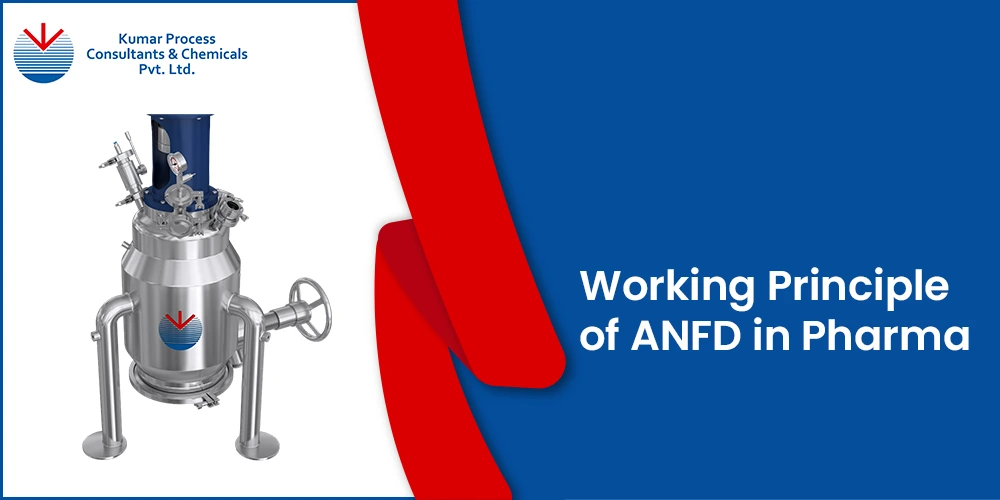


An Agitated Nutsche Filter Dryer (ANFD) is a filtration system mainly used in the pharmaceutical industry to separate solids from liquids and efficiently dry them. It has a cylindrical vessel that ensures uniform mixing and efficient separation of solid-liquid mixtures. A mechanical stirrer continuously agitates the contents, improving solid-liquid contact and speeding up both filtration and drying processes. These components work together to retain solids while allowing liquids to flow freely, optimizing filtration performance.
The ANFD integrates several steps—filtration, washing, reslurrying, drying, and discharging—into one continuous process, making it highly effective for separating and drying materials. This not only enhances efficiency but also ensures high-quality product output.
The filtration process starts by adding the slurry into the vessel, either all at once or in batches. The agitator runs at a low speed to mix the slurry evenly near the filter, preventing blockages. Gas pressure is then applied to separate the liquid from the solid. As filtration continues, the agitator lifts its blades to smooth out cracks in the solid layer, helping speed up the process compared to gravity-based methods.
After separating the API crystals, the remaining liquid and impurities are removed through washing. This can be done in different ways. In a traditional wash, a solvent pushes out the impurities. A pre-slurry wash is often more efficient. In a re-slurry wash, the agitated reactor mixes the solvent with the solid cake, fully suspending the solids. This improves contact between the solids and solvent, reducing the amount of solvent needed to reach the required purity. After washing, any leftover liquid is removed using pressure filtration.
After washing, the drying process begins using either pressurized gas heating or vacuum heating. Heat is applied to the vessel’s walls, filter base, and agitator blades for efficient drying. The agitator keeps mixing the material to ensure even drying and can adjust its position to keep the solid layer uniform. It can also reverse direction to break down tough materials. Once drying is complete, the system is cooled to bring the product to a safe temperature for handling and discharge.
In the final step, the agitator moves the solid cake toward the vessel wall and pushes it out. A funnel is often used to pack the material properly, and extra tools may help ensure complete product recovery. Agitated Nutsche Filter Dryers play a key role in pharmaceutical manufacturing by efficiently and safely separating solids while meeting strict industry standards.
Agitated Nutsche Filter Dryers (ANFDs) play an important role in the pharmaceutical industry by safely separating and drying materials without contamination. They are easy to clean and maintain, ensuring high hygiene and safety standards. In API production, ANFDs help maintain product purity while reducing contamination risks. Their closed system prevents exposure, making them essential for producing high-quality pharmaceuticals.
ANFD nutsche filter dryers use agitation and vacuum, or pressure in a closed vessel to separate solids from liquids. The agitator keeps a uniform slurry for filtration, while vacuum or pressure aids drying. This process ensures efficient solid-liquid separation and drying.
ANFD stands for Agitated Nutsche Filter Dryer. It's a key equipment for separating and drying materials efficiently.
To reduce drying time in ANFD, increase agitation speed, optimize vacuum or pressure levels, and use appropriate agitator blade design.